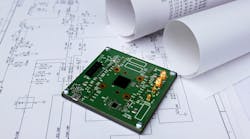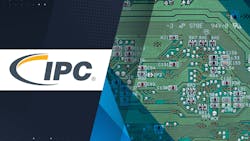IPC Standards for PCBs: What Are They and Why Do They Matter?
This article is part of the TechXchange: PCB Tools and Technology
What you’ll learn:
- IPC standards for better PCB manufacturing and assembly.
- Advantages of IPC standards.
The Institute for Printed Circuits (IPC) is as known as the Association Connecting Electronics Industry. It’s a trade association for the electronic interconnection industry that authorizes high-quality electronics by developing the standards to drive the success of the global electronics industry.
IPC, initially established by six PCB manufacturers in 1957, now consists of more than 3,000 companies that design, manufacture, and assemble PCBs for applications ranging from consumer electronics and automotive, to telecom and healthcare. IPC members are from different facets of the electronics industry such as original equipment manufacturers (OEMs), PCB manufacturers, PCB assembly service providers, and suppliers.
IPC works with the electronic industry to identify industry challenges and collaborates with its members in providing suitable solutions. It also gathers the latest data related to the electronics manufacturing industry and outlines appropriate standards for best practices.
The standards developed by the IPC are applicable in every stage of the PCB production, from design to manufacturing to final assembly. There are acceptability standards at various stages of development to ensure a high-quality end-product. Some key takeaways of the IPC standards include:
- The terms and definitions used in the standards are listed in the IPC-T-50 document.
- The standards for the file formats, product documentation, and design software are listed in the IPC-2581 and IPC-2610 series.
- The design and land patterns are covered in standards like IPC-2221, 2222, 2223, and 2226 as well as IPC-7351.
- Substrates and base materials for PCBs are expected to meet the standards mentioned in IPC- 4101, 4103, 4104, 4202, 4203, and 4204.
- Printed-board quality and reliability standards are outlined in IPC-6011, 6012, 6013, 6017, and 6018.
- Printed-board acceptability standards are described in IPC-A-600.
- Requirement criteria for soldered electronic assemblies are listed under IPC-J-STD-001, IPC-HDBK-001, and IPC-AJ-820.
- Acceptability standards for electronic assemblies are outlined under IPC-A-601.
- Cable and wire harness assemblies have the requirements and acceptance standards elaborated in IPC/WHMA-A-620, IPC-D-620, and IPC-HDBK-620.
- The acceptability standards for manufacturing, inspection, and testing of electronic enclosures are covered under IPC-A-630 and IPC-HDBK-630.
- There are standards for advanced packaging, storage, and handling, too.
Some of the IPC standards relevant to PCB design and manufacturing include:
- IPC-1752A establishes a standard reporting format for material declaration data exchanged among the designers, distributors, and manufacturers. It also supports reporting of bulk materials, components, assemblies, and products.
- IPC-2152 defines the current carrying requirements in copper traces and planes in a PCB design.
- IPC-2221 prescribes some generic design and performance requirements in PCBs and other methods of component mounting or interconnecting structures.
- IPC-2581 specifies a generic requirement for sharing information among supply-chain participants. It provides a standard format for exchanging design data that ensures reliable production outcomes.
- IPC-4101 covers requirements for a wide range of PCB laminates or prepregs used to build stackups.
- IPC-4761 reflects the design guidelines for via protection to ensure dependability, manufacturability, and quality.
- The IPC-A-600 series defines the acceptability criteria for printed circuit boards, as well as the three standard IPC classes for various PCB assemblies:
- Class 1: This includes consumer electronics and general products that are assembled at the cheapest possible price and expected to function for a set duration.
- Class 2: Under this category, products like laptops or home appliances are included. They are service-oriented products with dependability and an extended lifetime.
- Class 3: Critical performance electronics products like medical equipment and aerospace apparatus fit this category. They are expected to operate nonstop in harsh environments demanding very high reliability and robustness. IPC-7351 specifies the footprint and land-pattern requirements for surface-mount (SMT) components. SMT PCB assembly providers follow these specifications while designing the land patterns to ensure solderability and reliable electrical connections.
IPC standards are incorporated in design guidelines and can be verified using effective checklists throughout the development process. Customers now prefer products that guarantee user safety along with high performance. Hence, adhering to the IPC standards shall certify a PCB product to be of excellent quality.
Benefits Derived from IPC Standards
IPC standards bring several benefits to the electronics industry, such as:
- Enhanced product value and consistency: Strictly following the IPC standards throughout the development and manufacturing process leads to a high-quality product, further improving product reliability and customer satisfaction. IPC standards hence contribute to the consistency and overall product value in the market.
- Better communication among contributors: When all of the involved members follow the same IPC standards, it becomes easy to communicate between the groups. The common jargon assists in the clear interpretation of set standards for each deliverable and avoids any ambiguity during communication.
- Improved brand identity in the market: Following IPC standards helps build your brand value and sets a good reputation in the market. It indicates the commitment of the manufacturer toward product quality. This can bring in more collaboration and opportunities to expand your business.
- Lower cost: Adhering to the IPC standards can help a manufacturer improve supply-chain efficiency, which can further reduce the resource requirements. And it will substantially lower production cost.
- Seamless workflow: When all team members diligently follow IPC standards, it also significantly reduces the possibility of faults and delays. This leads to a smooth flow in the development, production, and assembly lines of a PCB product.
The above advantages justify the importance of IPC standards for PCBs, and they do matter for any PCB manufacturer and contract manufacturer (CM).
An experienced CM will not just focus on a few details related to assembly; rather, they integrate the whole process with a strong foundation based on the complete set of IPC standards. As a result, the CM can identify even a small PCB manufacturing defect in the assembly line and improve productivity. Collaborating with an experienced CM offers another route toward building a high-quality PCB product.

